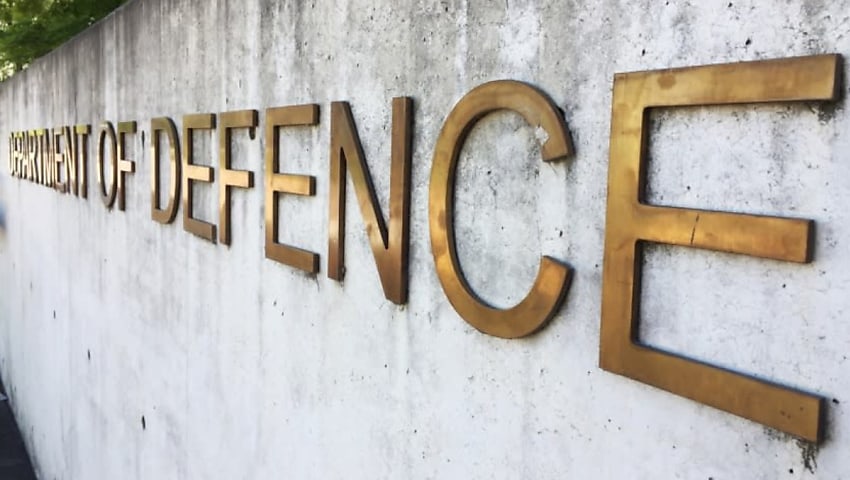Opinion: The public version of the government response to the Defence Strategic Review report provides clarity and many innovative new ideas, although set in a continuing framework of traditional assumptions, writes former naval officer and defence industry analyst Christopher Skinner.
The ultimate threat to Australia’s national security comes from the north so all those bare bases must be fortified, and land forces stationed in their defence. Logistic and health services must be directed to support not only of mainland defences but also littoral and further directed action by newly amphibious military and naval forces.
The enduring reality of Australia as a maritime nation astride three great oceans and dependent on maritime trade mostly carried in foreign shipping is acknowledged with the mandate for Navy to provide protection to sea lines of communication. Rather like a highway patrol rather than a road convoy escort. Submarines and other anti-submarine warfare (ASW) assets would help but might also be easily avoided by attackers.
Full support for AUKUS pillar 1 — the three-phase move to operating our own nuclear attack submarines (SSN) with brief acknowledgement of the challenges therein, especially building up the nuclear-competent workforce. Less so the pillar 2 advanced technologies, which will need a dedicated senior officer to drive the processes to achieve their potential benefits.
Speaking of highly focused officers, the precedent of AUKUS has been hailed as a good model and the same approach is now also proposed for accelerated Guided Weapons and Explosive Ordnance investment — in inventory and in manufacture of selected items, assuming the necessary intellectual property will be made available under suitable licensing arrangements.
Some predictable detailed announcements in the report such as cuts in some Army programs for infantry fighting vehicles and howitzer guns. The prospect of Army acquiring long-range missile capabilities including anti-ship weapons has not provided quite the same appeal.
Similarly, the characterisation of Navy forces as complementing the capabilities of the nuclear-powered submarine force doesn’t have quite the same appeal as the traditional naval fleet. But this is the new age of technology in everything and the only thing that hasn’t changed is the sheer size of the Australian continent and the accessibility from all sides by hostile submarines and long-range missiles.
Speaking of which, the report uses the quaint term “hypersonics” as though this is some new gimmicky technology to be developed. The reality is that hypersonic cruise missiles are already in production and constitute a formidable threat for air defence systems, whether in air, land or sea domains.
Another domain that gets cursory attention is space where there is no need yet for creation of a space command, as has the USA for example, but we are increasingly reliant on space-based networks for communications, civil and military, and for intelligence, surveillance and reconnaissance (ISR). Our vulnerability to interference with that space-based infrastructure is barely acknowledged.
Similarly with the cyber domain. All the concern is about protection of the defence command, control, communications and computers (C4) whereas attacks on the national information and communications networks would have devastating consequences that would also affect the Australian Defence Force, especially with its somewhat static strategic outlook to the north.
The call for complex networked systems to be open architecture seems to fly in the face of calls for zero trust architecture as the only widely accepted approach to enhance cyber security.
The most worrying aspect is the underlying assumption of a static force that bristles with deterrent power but only ventures forth to take action further afield in the Indo-Pacific in unspecified circumstances, rather than being a force in being that is appreciated within the region as supporting stability and rules-based international intercourse.
The approach to dealing with major challenges such as low resilience in oil fuel stocks is to appoint a new management body, the Fuel Council, as though this step alone solves the problem. And the solution isn’t purely about money either. There needs to be a whole-of-government approach to work with commercial bodies and other non-government entities to craft a national strategy that will carry us through a period of undeclared blockade that might arise in a period of tension.
The defence capability acquisition process also has some issues. There is a call for more sole-source procurement and off-the-shelf purchases (presumably from overseas) to speed up the acquisition timeline. What is accorded less priority is the possible additional cost and even worse, the lack of engagement in domestic industry that is vital for lifelong sustainment of those assets. We should have learned that lesson from past experience and it certainly should feature in risk management.
In conclusion, in spite of the many issues presented above, the review and the government response is impressive and well and truly achieves the 80 per cent output from the 20 per cent of the work completed. What awaits is the further 80 per cent of the work to achieve the remaining 20 per cent results. Let’s hope that is achievable by the time of the first biennial National Defence Strategy in 2024.


